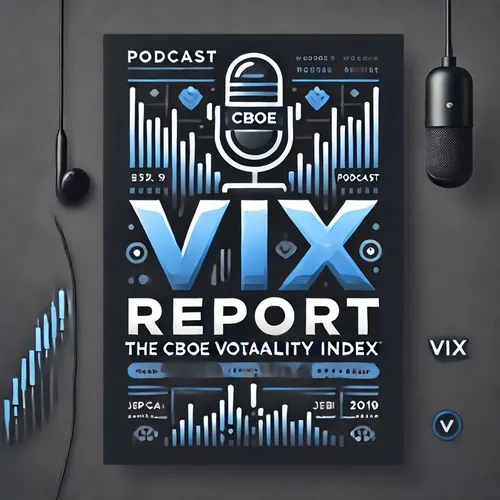Heightened Market Uncertainty as VIX Surges to 20.87
- Author
- QP-1
- Published
- Fri 23 May 2025
- Episode Link
- https://www.spreaker.com/episode/heightened-market-uncertainty-as-vix-surges-to-20-87--66221195
### VIX Report: Market Uncertainty on the Rise
The Cboe Volatility Index (VIX), a key measure of market expectations for volatility in the U.S. stock market, closed at 20.87 on May 21, 2025. This marks a significant increase from its previous close of 18.09 on May 20, representing a 15.4% rise in just one day. This surge in the VIX highlights growing concerns among investors about market stability and potential volatility in the near term.
The VIX, often dubbed the "fear index," is utilized by market participants to gauge the level of uncertainty or risk in the financial markets, with higher readings indicating increased fear or anticipated volatility. Several factors might be contributing to the recent uptick in the VIX.
### Factors Contributing to VIX Increase
1. **Market Volatility**: Recent fluctuations in the equity markets can lead to increased demand for options, driving up implied volatility. These fluctuations might stem from several sources, including corporate earnings announcements, geopolitical tensions, or shifts in monetary policy.
2. **Economic Indicators**: Recent data releases on inflation rates, employment statistics, and GDP growth can heavily influence investor sentiment. An uptick in inflation or a slowdown in economic growth can lead to fears of economic instability, pushing investors to become more risk-averse.
3. **Investor Sentiment**: Shifts in risk appetite among investors are often reflected in the VIX. A move towards more conservative investment strategies could result in higher demand for protective options positions, thereby elevating the index. Current trends suggest a move towards caution, as indicated by the recent VIX increase.
### Recent Trends
The recent upward trajectory in the VIX—from 17.24 on May 16 to 20.87 on May 21—suggests heightened anxiety about equity market conditions. Historically, the VIX has an inverse relationship with the S&P 500 Index, implying that when VIX rises, the market often faces downward pressure or uncertainty. The rise to 20.87 indicates a notable shift in market dynamics, with investors possibly bracing for further market turbulence.
### Market Context
Recent developments in the economic landscape provide some context for this trend. If recent economic data has been mixed or leaning negative, it’s reasonable to connect such outcomes with changes in the VIX. Similarly, geopolitical events that may impact economic or financial stability often lead to spikes in the index.
### Conclusion
As
